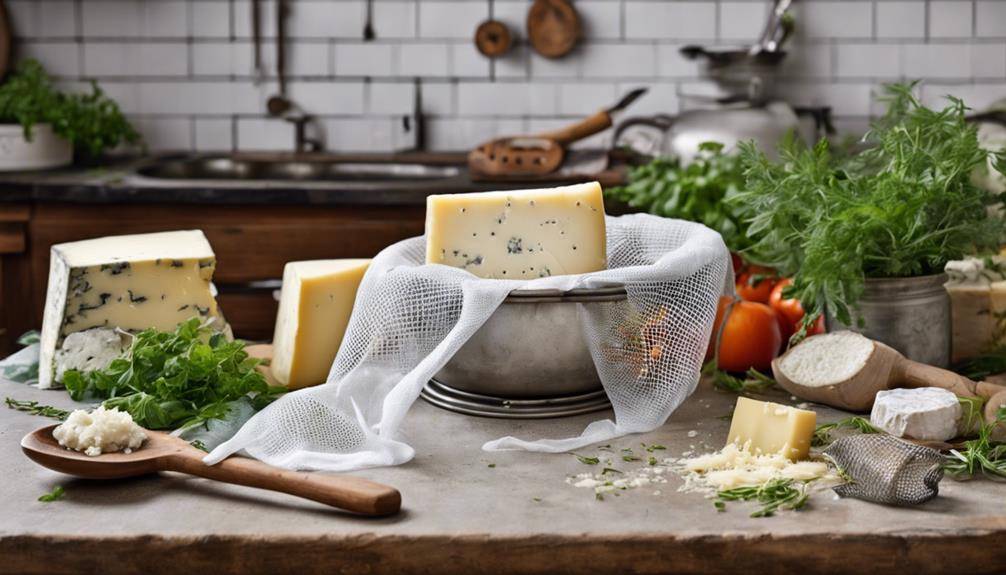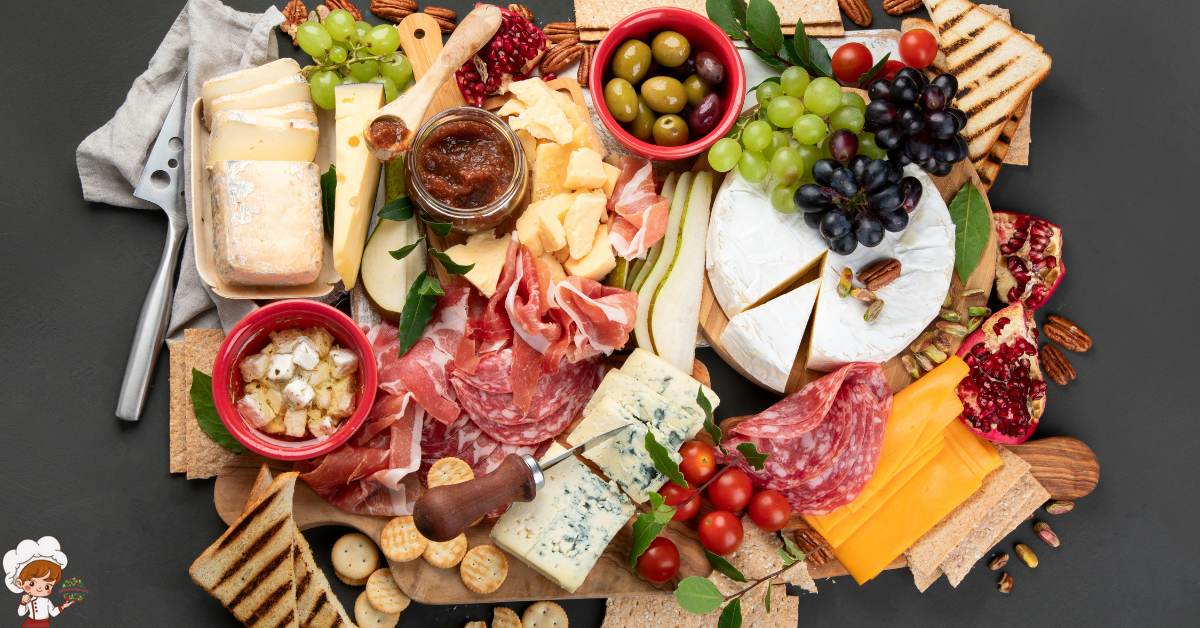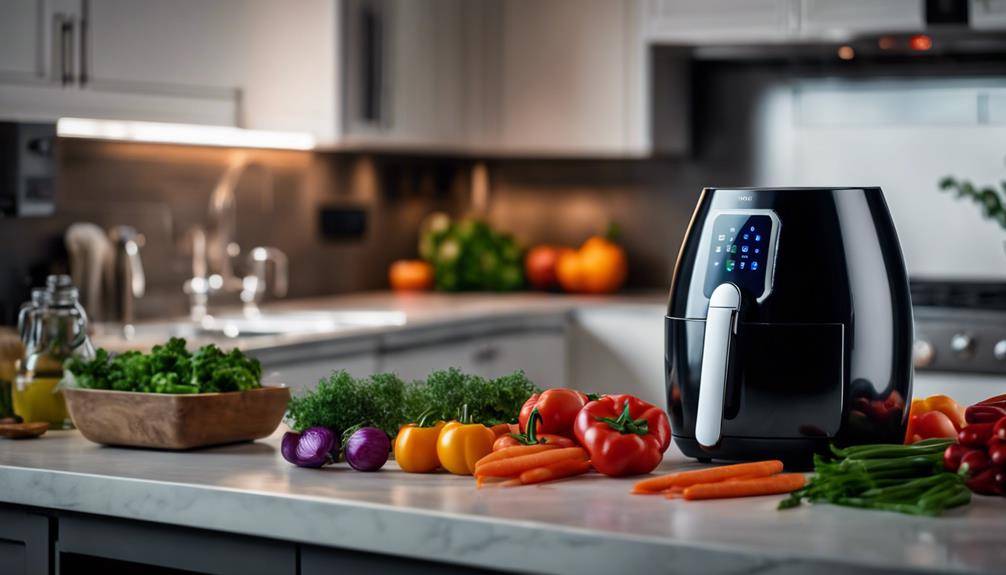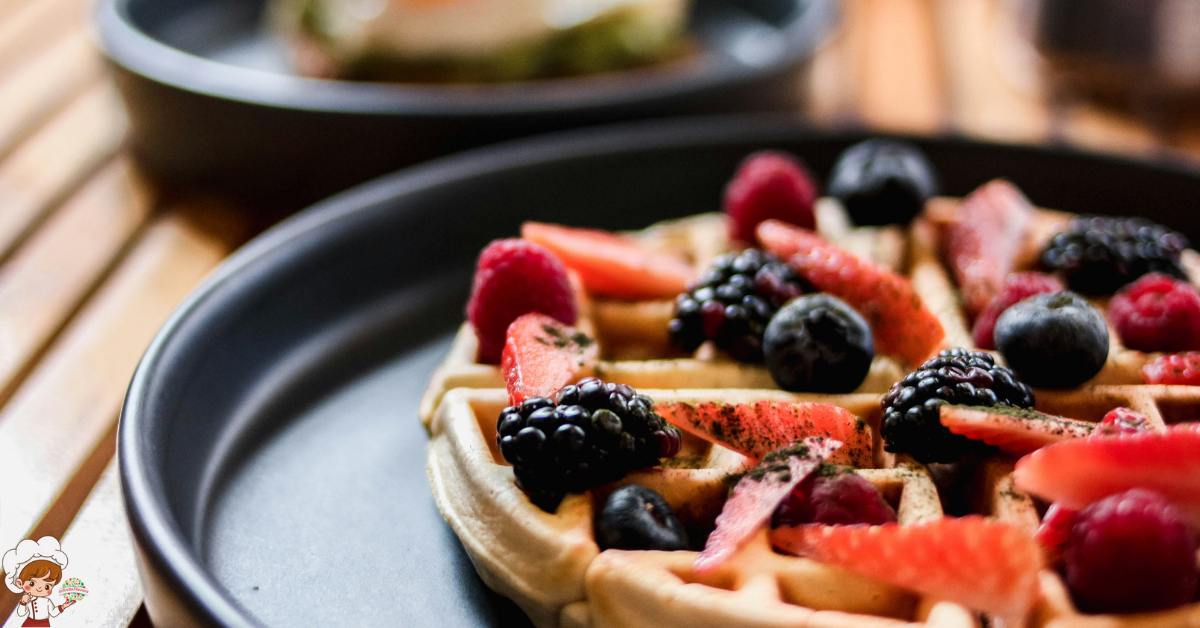Popular Cajun And Creole Food And Its African Roots
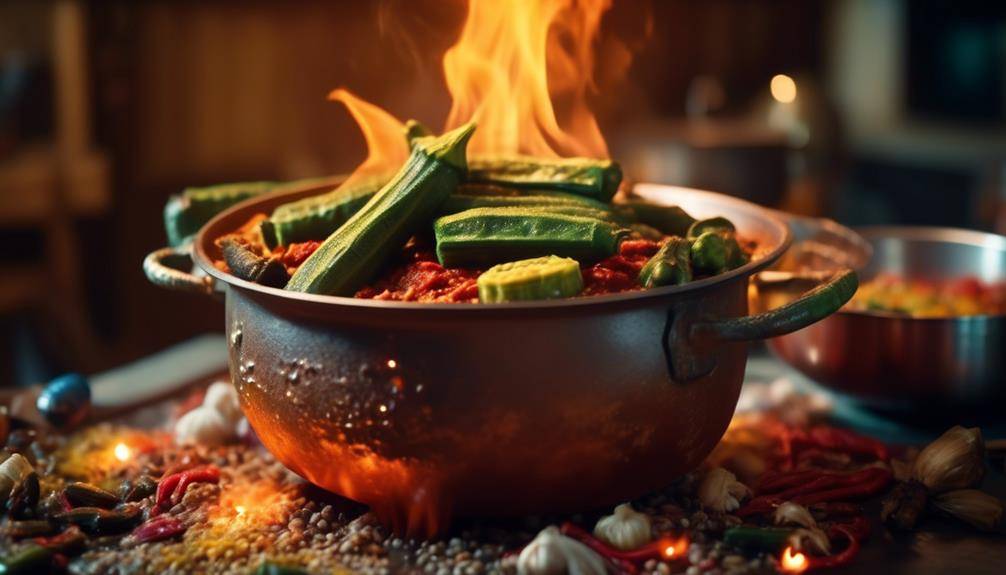
Step into the vibrant tapestry of Cajun And Creole Food And Its African Roots, where flavors dance on your palate like a jazz ensemble, each note carefully crafted to create a symphony of taste. But have you ever wondered about the roots of these soulful dishes? Prepare to uncover the fascinating story of how African influences merged with French and Spanish traditions, weaving a culinary heritage that is as rich and diverse as the Louisiana bayous themselves. From the exotic spices to the unique cooking techniques, there is much to explore and discover in the tantalizing world of Cajun/Creole food.
Historical Origins
The historical origins of Cajun/Creole food can be traced back to the rich and complex blend of African, French, Spanish, and Indigenous influences that have shaped the culinary traditions of Louisiana. One of the key contributors to the development of Cajun/Creole cuisine is the African culinary traditions that were brought to the region through the transatlantic slave trade. The cultural exchange that occurred between the African slaves and the European colonizers played a significant role in shaping the unique flavors and cooking techniques that are characteristic of Cajun/Creole food.
African culinary traditions brought to Louisiana included a wide range of ingredients and cooking methods. Staples such as okra, rice, yams, and black-eyed peas, which were commonly used in West African cuisine, were incorporated into the local dishes. Additionally, African cooking techniques such as stewing, slow cooking, and the use of spices and herbs were adopted and adapted by the Cajun/Creole community.
The cultural exchange between the African slaves and the European colonizers also influenced the ingredients and flavors used in Cajun/Creole cuisine. The French and Spanish colonizers introduced ingredients such as tomatoes, onions, garlic, and various herbs and spices. These ingredients were incorporated into traditional African dishes, resulting in the creation of new, fusion dishes that combined the flavors of both cultures.
African Influences
Now let’s take a closer look at the African influences on Cajun/Creole cuisine. One significant influence is the use of African spice blends, which bring a unique flavor profile to dishes. Additionally, the combination of rice and beans, a staple in African cuisine, is a common feature in Cajun/Creole cooking. Lastly, the incorporation of okra and the creation of gumbo can also be traced back to African culinary traditions. By examining these points, we can gain a deeper understanding of the rich African roots that are deeply ingrained in Cajun/Creole food.
African Spice Blends
African spice blends play a significant role in the flavors and culinary traditions of Cajun/Creole cuisine, infusing dishes with vibrant and complex profiles that are both unique and reminiscent of their African roots. These spice blends are a result of centuries-old traditional cooking techniques, passed down through generations, and have become an integral part of the Cajun/Creole culinary repertoire. Here are three sub-lists to grab your attention:
- Varied Ingredients: African spice blends are a fusion of different herbs, spices, and aromatics like cayenne pepper, paprika, thyme, garlic, and onion, creating a harmonious balance of flavors.
- Bold and Robust Flavors: These spice blends add a depth of flavor to Cajun/Creole dishes, creating a symphony of tastes that tantalize the palate.
- Versatility: African spice blends are versatile and can be used in various dishes, from gumbo and jambalaya to blackened fish and seafood boils, enhancing the overall taste experience.
Rice and Beans
Continuing our exploration of Cajun/Creole cuisine’s African influences, let’s now dive into the rich history and flavors of Rice and Beans. Rice and beans have a deep-rooted connection to African culinary traditions, with historical influences that can be traced back to the transatlantic slave trade. Enslaved Africans brought with them the knowledge of cultivating and cooking these staple ingredients, which were essential to their survival. This cultural significance is evident in the way rice and beans are prepared and enjoyed in Cajun/Creole cuisine today.
Both rice and beans were readily available and affordable, making them accessible to the enslaved population. The combination of rice and beans provided a complete source of nutrition, offering a balance of carbohydrates, protein, and fiber. This simple but nourishing dish became a mainstay in the diet of African slaves and their descendants, and it continues to be a beloved and iconic part of Cajun/Creole cuisine.
The cooking techniques used in preparing rice and beans also reflect African influences. One such technique is the use of seasoning agents like onions, garlic, and peppers, which add depth and flavor to the dish. Additionally, the method of cooking rice and beans together in the same pot, known as “jambalaya” in Cajun/Creole cuisine, is reminiscent of one-pot cooking methods commonly used in West African cuisine.
Rice and beans have not only left a lasting impact on the culinary landscape of Cajun/Creole cuisine but also serve as a reminder of the resilience and creativity of African people in the face of adversity. The cultural significance of this dish cannot be overstated, as it represents a connection to ancestral traditions and a testament to the enduring legacy of African influences in Cajun/Creole food.
Okra and Gumbo
With its thickening properties and distinctive flavor, okra plays a pivotal role in the iconic dish of Cajun/Creole cuisine known as Gumbo, showcasing its African influences. Okra, a vegetable native to West Africa, was brought to the Americas by African slaves during the transatlantic slave trade. Its cultivation and consumption quickly spread throughout the Southern United States, where it became a staple in African-American cooking.
Today, okra farming is still prevalent in the region, contributing to the rich culinary heritage of Cajun/Creole cuisine. Gumbo itself has various regional variations, with some recipes including okra as a primary ingredient, while others rely on a roux for thickening. The use of okra in Gumbo reflects the African tradition of using this versatile vegetable to enhance both flavor and texture in dishes.
French and Spanish Fusion
As you explore the influence of French and Spanish fusion on Cajun/Creole cuisine, you’ll discover a rich tapestry of culinary cross-cultural influences. The historical colonial connections between France and Spain played a significant role in shaping the flavors and techniques used in this cuisine. Additionally, the influential spice trade further enhanced the fusion, introducing exotic spices that added depth and complexity to these dishes.
Culinary Cross-Cultural Influences
The fusion of French and Spanish culinary traditions has played a significant role in shaping the unique flavors and techniques found in Cajun/Creole cuisine. This culinary cross-cultural exchange has resulted in a harmonious blend of rich, bold flavors and diverse cooking techniques. Here are three key ways in which the French and Spanish influences have shaped Cajun/Creole cuisine:
- Ingredient selection: Both French and Spanish cuisines prioritize the use of fresh, local ingredients. This emphasis on quality ingredients has translated into the vibrant and flavorful dishes of Cajun/Creole cuisine.
- Techniques: The French and Spanish cooking techniques, such as sautéing, braising, and roasting, have been incorporated into Cajun/Creole cuisine. These techniques contribute to the complex and layered flavors that are characteristic of the cuisine.
- Spices and seasonings: The French and Spanish brought with them a variety of spices and seasonings, including garlic, thyme, bay leaves, and cayenne pepper. These flavors have become staples in Cajun/Creole cuisine, adding depth and heat to the dishes.
The fusion of French and Spanish culinary traditions has undeniably influenced and enriched the flavors and techniques of Cajun/Creole cuisine, creating a truly unique and delicious culinary experience.
Historical Colonial Connections
The fusion of French and Spanish colonial influences in Cajun/Creole cuisine has resulted in a rich tapestry of flavors and culinary techniques that continue to captivate the taste buds. The historical colonial connections between France and Spain played a significant role in shaping the culinary traditions of Louisiana. Through colonial trade and cultural exchange, the French and Spanish brought their own ingredients, cooking methods, and flavor profiles to the region.
The French introduced techniques such as roux-making and the use of herbs like thyme and parsley, while the Spanish contributed ingredients like tomatoes and peppers. This cross-pollination of culinary practices created a unique blend of flavors, with French and Spanish influences merging seamlessly with the African and Native American ingredients and techniques already present in the region. The result is a cuisine that is both diverse and deeply rooted in history.
Influential Spice Trade
Through the influential spice trade, the fusion of French and Spanish culinary traditions in Cajun/Creole cuisine created a vibrant and complex flavor profile that continues to tantalize the senses. The cultural exchange that occurred during this period brought together a variety of spices and ingredients from both sides of the Atlantic, resulting in a unique blend of flavors that defines Cajun/Creole cuisine today.
- The French influence introduced spices like thyme, bay leaves, and garlic, adding depth and richness to dishes.
- Spanish influences brought in smoky paprika, saffron, and cayenne pepper, adding a fiery kick to the cuisine.
- The combination of these spices with local ingredients, such as seafood, rice, and vegetables, created a diverse and dynamic culinary tradition.
The influential spice trade not only transformed the flavor profile of Cajun/Creole cuisine but also reflects the rich history of cultural exchange that shaped the region’s culinary heritage.
Native American Contributions
Native American contributions played a significant role in shaping the flavors and culinary techniques found in Cajun/Creole food. The Native American agriculture and Indigenous culinary traditions provided a strong foundation for the development of this unique cuisine. Native Americans cultivated crops such as corn, beans, and squash, which became staples in the Cajun/Creole diet. These crops formed the basis of many dishes, including the famous Louisiana gumbo.
The Indigenous culinary traditions also influenced the cooking methods used in Cajun/Creole cuisine. Native Americans utilized techniques such as smoking, drying, and fermenting to preserve food. These methods were adopted by early settlers and became integral to the preparation of dishes like smoked sausages and pickled vegetables in Cajun/Creole cooking.
Furthermore, Native Americans introduced new ingredients to the region, which greatly enriched the flavor profiles of Cajun/Creole food. For example, the use of sassafras leaves in filé powder, a key ingredient in gumbo, was a Native American contribution. The strong flavors of ingredients like wild game, fish, and various herbs and spices were also incorporated into the cuisine, adding depth and complexity to the dishes.
Comparatively, African influences brought by enslaved people further shaped the flavors of Cajun/Creole food. African cooking techniques such as braising, stewing, and frying were integrated into the culinary practices of the region. The combination of Native American and African culinary traditions resulted in a unique blend of flavors, creating the distinct taste that we associate with Cajun/Creole cuisine today.
Key Ingredients and Flavor Profiles
With the foundation laid by Native American contributions and the integration of African cooking techniques, Cajun/Creole cuisine showcases a rich array of key ingredients and flavor profiles. These elements not only reflect the cultural heritage of the African diaspora but also add depth and complexity to the dishes.
- African spices: One of the most significant influences from Africa is the use of spices. African spices such as cayenne pepper, paprika, and thyme are key ingredients in many Cajun/Creole dishes. These spices bring heat, depth, and a unique flavor profile to the cuisine. The combination of these spices creates a harmonious balance that is both bold and tantalizing to the taste buds.
- Cultural heritage: The integration of African cooking techniques into Cajun/Creole cuisine is a testament to the cultural heritage of the African diaspora. These techniques, such as gumbo, jambalaya, and étouffée, have become iconic dishes in Louisiana. They showcase the resourcefulness and ingenuity of enslaved Africans who adapted their cooking methods to the ingredients available in their new environment. The result is a cuisine that is deeply rooted in African traditions but also influenced by the local ingredients and culinary practices.
- Flavor profiles: The flavor profiles of Cajun/Creole cuisine are complex and multi-dimensional. The combination of African spices, French culinary techniques, and Native American ingredients creates a symphony of flavors that is both comforting and exciting. From the rich and smoky flavors of gumbo to the spicy and tangy notes of jambalaya, each dish tells a story of cultural fusion and culinary creativity.
Iconic Cajun/Creole Dishes
Cajun/Creole cuisine boasts a repertoire of iconic dishes that showcase the culinary prowess and cultural diversity of the African diaspora in Louisiana. One such dish is gumbo, a hearty stew that combines African and European cooking techniques. Gumbo typically includes a variety of ingredients such as okra, a vegetable with African origins that acts as a natural thickener, and a combination of meats or seafood. The dish is often served over rice, which is a staple in West African cuisine.
Another iconic Cajun/Creole dish is jambalaya, a rice-based dish that is similar to Spanish paella. Jambalaya is a versatile dish with many variations, but it usually includes a combination of meats, such as chicken, sausage, and shrimp, along with vegetables like onions, bell peppers, and celery. The use of spices, such as paprika, cayenne pepper, and thyme, adds depth and flavor to the dish.
One variation of jambalaya is Creole jambalaya, which includes tomatoes in the recipe, giving the dish a slightly reddish color and a tangy flavor. In contrast, Cajun jambalaya is typically made without tomatoes, resulting in a darker, smokier flavor profile. Both versions are delicious and reflect the cultural influences that have shaped Cajun/Creole cuisine.
Popular Cajun And Creole Food And Its African Roots; Frequently Asked Questions
What Are Some Traditional Native American Ingredients Commonly Used in Cajun/Creole Cuisine?
You’ll find a rich blend of Native American ingredients in traditional Cajun/Creole cuisine. These flavors include corn, beans, squash, wild game, and seafood. The combination of these elements creates a unique and flavorful culinary experience.
How Did the French and Spanish Influences Shape the Culinary Traditions of Cajun/Creole Food?
The French and Spanish influences in Cajun/Creole cuisine shaped the culinary traditions in unique ways. They brought new ingredients, techniques, and flavors that blended with the African impact on Cajun/Creole food development.
Are There Any Specific Key Ingredients That Are Essential to the Flavor Profiles of Cajun/Creole Dishes?
When it comes to the flavor profiles of Cajun/Creole dishes, key ingredients like onions, bell peppers, and celery are essential. These ingredients, along with cultural influences, contribute to the unique and delicious taste of this cuisine.
Can You Provide Some Examples of Iconic Cajun/Creole Dishes and Their Significance in the Culinary Culture?
In Cajun/Creole cuisine, traditional dishes like gumbo, jambalaya, and étouffée hold immense cultural significance. These iconic dishes showcase the rich blend of flavors and spices, with seafood playing a vital role in creating the distinct taste.
How Did the African Influences Impact the Development of Cajun/Creole Cuisine?
African culinary influences greatly shaped the development of flavors and cooking techniques in Cajun/Creole cuisine. African slaves played a crucial role in creating iconic dishes, infusing them with their rich heritage and culinary traditions.
Conclusion
In conclusion, the rich and flavorful Cajun/Creole cuisine is deeply rooted in its African origins. The fusion of French and Spanish influences, along with Native American contributions, have created a unique culinary tradition. From the key ingredients to the complex flavor profiles, Cajun/Creole dishes are a testament to the cultural diversity and historical significance of this cuisine. The African influences can be seen in the use of spices, cooking techniques, and the overall soulful nature of these iconic dishes.



